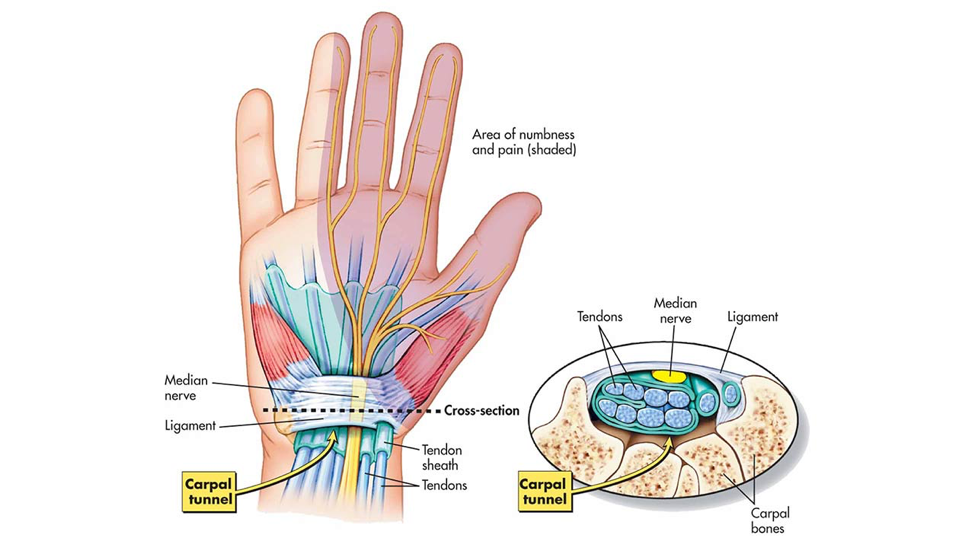Carpal Tunnel Syndrome
Carpal Tunnel Syndrome is the most common peripheral nerve compression, and can affect almost 10% of the population. It results from excessive pressure on the median nerve within the carpal tunnel. Wrist position can often affect symptoms, and often people drop their wrist down to shake it out when symptoms are present. People most often experience numbness, tingling, and sometimes a vague achy pain in their hand. It usually affects the thumb, index, long, and ring fingers. Symptoms often start intermittently at first, but become more frequent over time. If left untreated, it can cause muscle loss, weakness, and permanent sensory loss in the fingers.
Your doctor will perform a physical exam and might order a nerve conduction study to help confirm the diagnosis. Nonsurgical treatments may include wearing wrist splints at night, taking medication, avoiding activities that aggravate the symptoms, and possibly a steroid injection. Should these treatments fail to alleviate the symptoms, surgery then becomes an excellent option.
During surgery your doctor will open the “roof” of the carpal tunnel by dividing the transverse carpal ligament and releasing the antibrachial fascia. This will alleviate the pressure on the nerve which will restore blood flow to the nerve, so that the nerve can heal itself.
Content provided by Dr. Alexander Majors. To schedule an appointment with Dr. Majors at Sierra Pacific Orthopedics' Herndon Campus, please call (559) 256-1639.
